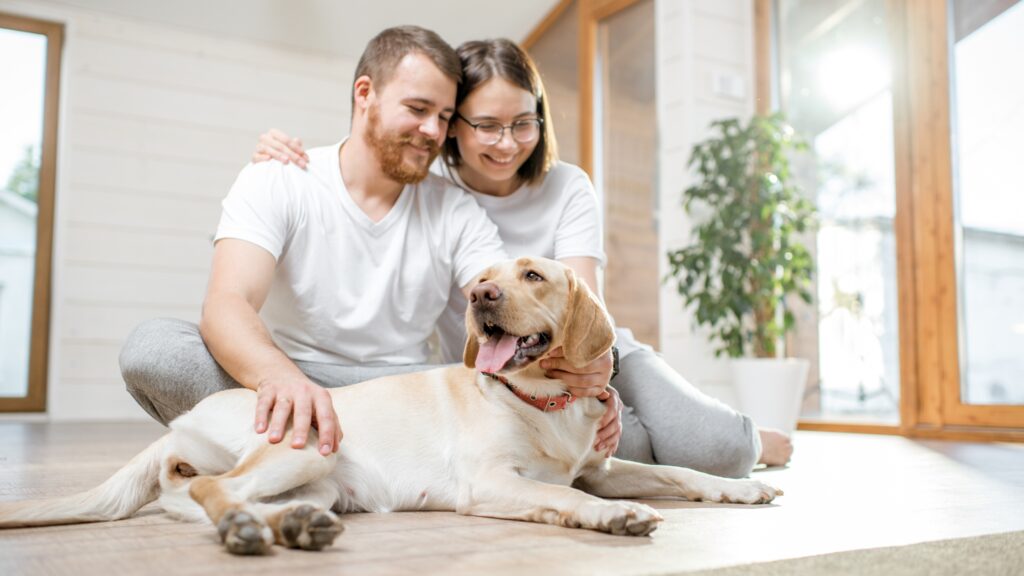When your dog finally arrives at their new home, it’s natural to be excited to shower them with love and introduce them to their new surroundings. However, don’t be surprised if they don’t immediately seem themselves. Moving can be a significant transition for your furry friend, and they might need some time to adjust.
Imagine the situation from your dog’s perspective. They’ve just been through a potentially long journey, and now they find themselves in a completely new environment filled with unfamiliar scents, sounds, and sights. It’s understandable if they feel a bit disoriented and anxious.
We’ll explore how long it typically takes for a dog to adjust to a new home, common signs of anxiety during this transition, and practical tips to help your dog feel comfortable in their new environment.

How Long Does It Take a Dog to Adjust to a New Home?
The adjustment period for dogs varies widely depending on their temperament, past experiences, and the nature of the move.
Some dogs may start feeling at home within a few days, while others might take weeks or even months to fully settle in. If your dog is naturally anxious or has experienced trauma, they may need extra time and patience.
Common Signs of Anxiety in a New Home
As your dog gets used to their new home, you might notice behaviors that indicate they’re feeling anxious, such as:
- Following you around constantly
- Heightened separation anxiety
- Eating less or refusing to eat
- Digestive issues like diarrhea or constipation
- Less interest in playtime
- Growling, barking, or aggression in unfamiliar situations
These behaviors are typically temporary and should subside as your dog becomes more comfortable. However, if these signs persist or if you notice more serious symptoms like vomiting, prolonged lethargy, or refusal to eat for several days, it’s important to contact your vet, as your dog might be ill.

Tips to Help Your Dog Adjust to Their New Home
- Stick to Their Daily Routine
Routine is crucial for helping dogs feel safe. Try to keep their feeding, walking, and playtime schedules consistent with what they’re used to. - Keep Their Old Belongings
While you might be tempted to buy new items for your dog, it’s best to keep their familiar beds, toys, and food bowls around. Gradually introduce new items over time. - Create a Sanctuary Space
Identify a quiet spot in your new home where your dog can retreat and relax. Set it up with their favorite bed, blankets, and toys that smell like their old home. - Go Slow with New Food
If you need to switch your dog’s food, do it gradually over several weeks to avoid upsetting their stomach. Stick with their old food for a while after the move, if possible. - Use Treats and Play for Positive Associations
Help your dog associate their new home with positive experiences. Use treats and games to encourage exploration of each room and new parts of the neighborhood. - Introduce New Things Gradually
Moving is a major event for your dog, and their stress levels might be high. Avoid overwhelming them by introducing new people, places, and experiences slowly, with plenty of time to adjust in between. - Work with a Trainer if Needed
If your dog’s anxiety or aggression persists, consider consulting a positive reinforcement-based trainer. They can help you understand your dog’s behavior and rebuild their trust. - Schedule a Vet Visit
Set up an appointment with your new vet within a week of arrival to ensure your dog is healthy after their travels. Your dog might also need new vaccinations depending on your new location.
Final Thoughts
Congratulations on your move! With patience, routine, and lots of love, your dog will soon settle into their new home and enjoy exploring their new surroundings with you.
Moving is a big change, but it can also be the start of a wonderful new chapter for you and your furry friend.